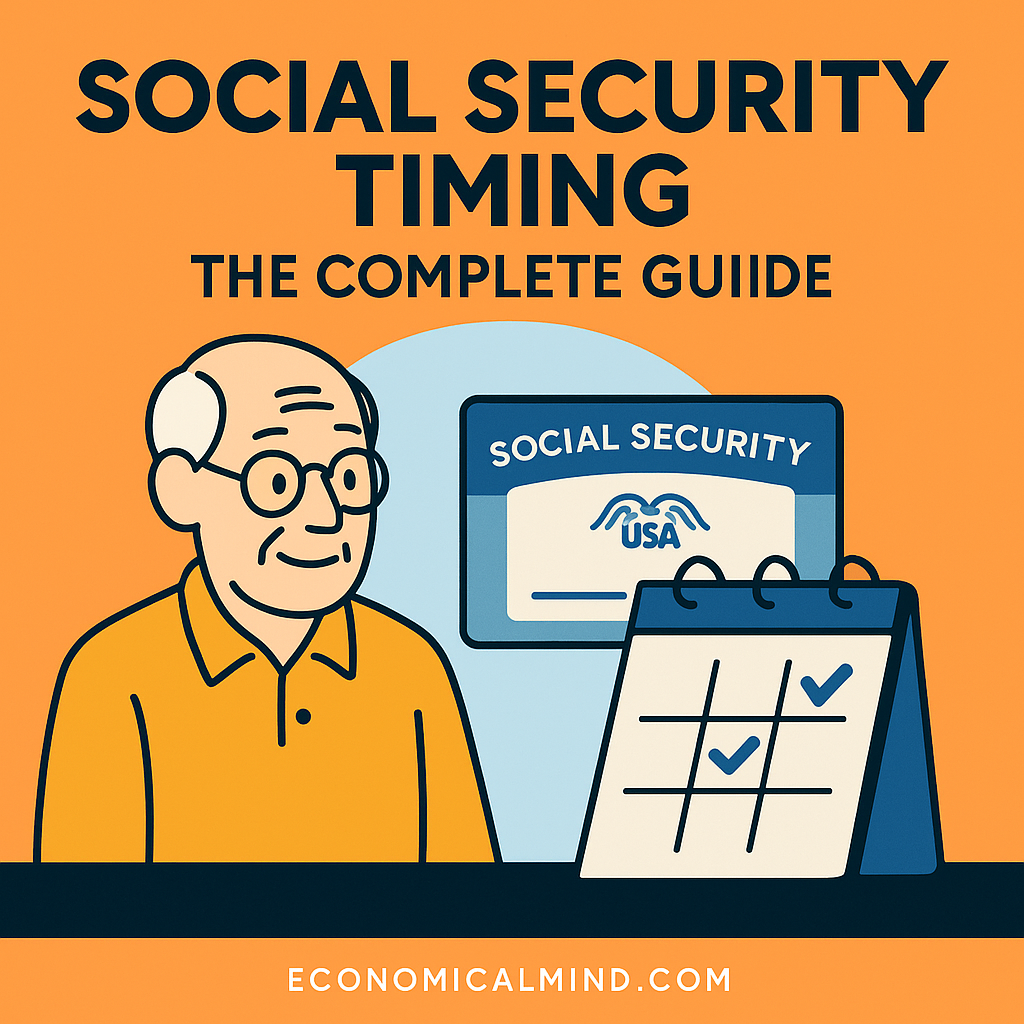
Knowing when to claim Social Security can make a huge difference in your lifetime income. Whether you’re approaching retirement or planning ahead, understanding how timing affects your benefits helps you make the most of what you’ve earned.
What Is Social Security Timing?
Social Security timing refers to the age you choose to start receiving retirement benefits. You can claim as early as age 62, wait until full retirement age (FRA) — typically between 66 and 67 — or delay up to age 70 for maximum benefits.
The longer you wait, the larger your monthly check becomes — but you’ll receive it for fewer years. The goal is to balance longevity, lifestyle, and income needs.
How Claiming Age Affects Your Benefits
- Age 62 (Early Claiming): You’ll receive smaller monthly payments (up to 30% less) for life.
- Full Retirement Age (66–67): You’ll receive 100% of your earned benefit.
- Age 70 (Delayed Claiming): You’ll earn 8% more per year you wait after FRA, up to 32% higher payments.
Example:
If your full benefit is $2,000 per month at age 67, waiting until age 70 raises it to about $2,640.
Pros of Delaying Social Security
1. Higher Lifetime Benefits
If you live into your 80s or beyond, delaying can significantly increase your total income.
2. Inflation Protection
Benefits are adjusted for cost of living, so higher starting payments grow even more over time.
3. Greater Spousal Protection
Delaying boosts survivor benefits for your spouse if you pass away first.
4. Reduces Pressure on Investments
Larger Social Security checks can reduce how much you need to withdraw from savings.
5. Predictable Income
Once you start receiving benefits, they’re guaranteed for life.
Cons of Delaying Social Security
1. Fewer Years of Benefits
If you delay but don’t live long enough to break even, you may receive less overall.
Fix: Estimate your life expectancy and health realistically.
2. Opportunity Cost
You might need to draw more from savings in the meantime.
Fix: Compare total income projections before deciding.
3. Uncertain Policy Changes
Future adjustments to Social Security could impact benefits.
Fix: Base your decision on current laws but stay informed.
4. Financial Need May Come First
Some retirees need income immediately to cover living expenses.
Fix: Consider part-time work or partial withdrawals to bridge the gap.
5. Emotional Preference for “Now”
Waiting requires patience — and trust in long-term planning.
Fix: Run the numbers with a financial advisor to visualize benefits clearly.
Best Practices for Choosing When to Claim
1. Know Your Full Retirement Age
Find your exact FRA based on your birth year using the Social Security Administration’s chart.
2. Run Multiple Scenarios
Use online calculators or SSA tools to compare early, full, and delayed claiming options.
3. Consider Health and Longevity
If your family has a history of long life expectancy, waiting often pays off.
4. Factor in Spousal Benefits
If married, coordinate claiming strategies to maximize combined household income.
5. Review Other Income Sources
The more secure your savings and pensions, the easier it is to delay Social Security.
6. Account for Taxes
Up to 85% of your benefits can be taxable depending on income — plan accordingly.
7. Avoid Blindly Following Rules of Thumb
There’s no one-size-fits-all answer — what’s “optimal” depends on your health, savings, and goals.
8. Reassess Each Year
If circumstances change — health, income, or laws — revisit your plan before claiming.
Key Takeaway
The best Social Security timing decision is the one that fits your life, not just the math. With the right strategy, you can balance income needs, longevity, and peace of mind in retirement.
